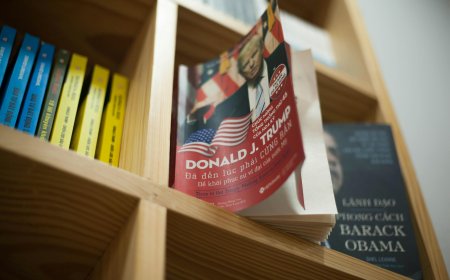What Happens When the Fed Cuts Rates at Record Highs
The Fed has cut rates at stock market highs before. Here’s what history reveals about investor reactions and market outcomes.

When the Federal Reserve cuts interest rates, most investors instinctively cheer. Cheaper money, easier credit, and a central bank seemingly on their side—what’s not to like? But when those cuts arrive at moments when the stock market is already hitting record highs, the story often takes a more complicated turn.
History shows that rate cuts at market peaks can signal very different futures: sometimes sparking fresh rallies, other times foreshadowing looming downturns. As traders in the U.S., UK, Canada, and Australia watch the Fed with laser focus, many are asking: what does the past tell us about what happens next?
Why the Fed Cuts Rates When Markets Are Strong
The Fed’s decision-making rarely hinges on equity markets alone. Instead, cuts typically respond to broader economic signals—slowing job growth, weak inflation, or strains in credit markets. But occasionally, those cuts happen when Wall Street indices are at or near historic highs.
- Economic insurance: The Fed sometimes acts preemptively, aiming to extend expansions and avoid recession.
- Financial stress behind the scenes: Even when stocks look strong, underlying risks—tight credit or weak manufacturing—can trigger concern.
- Market confidence: Rate cuts often reassure investors, creating a short-term surge in equities.
Understanding this dynamic is crucial. A booming market doesn’t always mean a booming economy, and the Fed often sees what ordinary investors miss.
Lessons from the Late 1990s
One of the most striking examples came in 1998. The U.S. economy was humming, tech stocks were soaring, and the Nasdaq was climbing to dizzying new heights. Then came the Asian financial crisis and the collapse of Long-Term Capital Management, a hedge fund so large its troubles threatened global stability.
The Fed cut rates despite the S&P 500 sitting near record levels. At first, Wall Street erupted in celebration. Stocks pushed higher, emboldened by the belief that the Fed had their back. But this euphoria proved short-lived. Within two years, the dot-com bubble burst, erasing trillions in market value.
The lesson: rate cuts at highs can provide temporary relief but may also mask deeper structural risks.
The 2007 Playbook: Calm Before the Storm
Another example etched in market memory is 2007. By midyear, the Dow Jones Industrial Average had reached then-record levels. But beneath the surface, mortgage defaults were rising and the housing market was cracking.
The Fed began cutting rates in September 2007, hoping to cushion the economy. Initially, the market rallied, with many investors convinced the worst was behind them. Yet what followed was the global financial crisis—the most severe economic downturn since the Great Depression.
Takeaway: when cuts arrive at highs, they may signal the Fed sees more trouble than the market acknowledges.
A More Recent Case: 2019
Fast forward to 2019. The U.S. economy appeared solid, unemployment was at historic lows, and the S&P 500 was setting new records. Yet trade tensions with China and slowing global growth spooked policymakers.
The Fed executed a series of “insurance cuts.” Unlike in 2007, the market did not collapse. Instead, stocks rallied into 2020—until the pandemic triggered an unprecedented crash.
Here, history showed a middle ground: rate cuts at highs can indeed extend bull markets, but they cannot shield against external shocks.

Investor Psychology: Relief or Red Flag?
How investors interpret rate cuts often determines short-term market moves. At face value, cheaper borrowing costs fuel optimism. But savvy investors know the Fed rarely acts without reason.
- Optimistic view: The Fed is adding fuel to an already strong market, creating opportunities in equities.
- Pessimistic view: If cuts happen at highs, the Fed might see hidden risks the public doesn’t.
This psychological tug-of-war explains why markets often surge immediately after cuts but grow more volatile in the months that follow.
A Personal Story from the Trading Floor
In late 2007, Mark Reynolds, a London-based trader, recalled the day the Fed announced its first rate cut after the Dow had hit records. “The room exploded with cheers,” he said years later. “We thought we were invincible. Within months, half my desk was gone.”
His memory captures the paradox. Rate cuts often spark short-lived euphoria, but history warns that they sometimes precede turbulence. For ordinary investors in the U.S., UK, Canada, and Australia, these turning points aren’t just market trivia—they shape retirement accounts, mortgage rates, and job security.
Key Takeaways from History
Looking back, several patterns emerge when the Fed cuts rates at market highs:
- Short-term rallies are common. Markets often jump on the perception of easier money.
- Hidden risks usually exist. Whether it was the dot-com bubble, housing collapse, or trade wars, underlying concerns often drive the Fed’s hand.
- Long-term outcomes vary. Sometimes cuts extend bull markets, other times they precede recessions.
- Investor caution is vital. Blind optimism has historically led to painful corrections.
What It Could Mean Today
For investors now, the parallels are striking. Stock indices sit near record highs, corporate profits are strong, and yet inflation, global tensions, and consumer debt clouds hang in the background. If the Fed cuts rates in this environment, history suggests two simultaneous truths:
- The immediate reaction will likely be bullish.
- The long-term path depends not on the cuts themselves but on whether underlying economic cracks widen.
Conclusion: Rate Cuts Are a Signal, Not a Solution
The past shows that when the Fed cuts rates at record market highs, investors should celebrate with caution. Yes, stocks often climb in the short run. But those cuts often hint at fragilities lurking beneath the surface.
For long-term investors in Tier-1 countries, the lesson is clear: don’t confuse Fed support with immunity from downturns. History doesn’t always repeat, but it rhymes—and those who ignore the warning signs risk paying a heavy price.
FAQs
Q1: Do rate cuts always boost the stock market?
Not always. While markets often rally initially, long-term outcomes depend on broader economic conditions.
Q2: Why would the Fed cut rates when stocks are at highs?
The Fed may see risks in the economy—such as slowing growth or financial stress—even if equities look strong.
Q3: What is the most famous example of cuts at highs?
The 2007 cuts stand out, as they preceded the global financial crisis despite record-setting markets.
Q4: How should individual investors respond?
Diversification, cautious optimism, and attention to economic fundamentals are key.
Q5: Can rate cuts prevent recessions?
They can soften the blow, but history shows they cannot always prevent downturns.
What's Your Reaction?
 Like
0
Like
0
 Dislike
0
Dislike
0
 Love
0
Love
0
 Funny
0
Funny
0
 Angry
0
Angry
0
 Sad
0
Sad
0
 Wow
0
Wow
0




































































